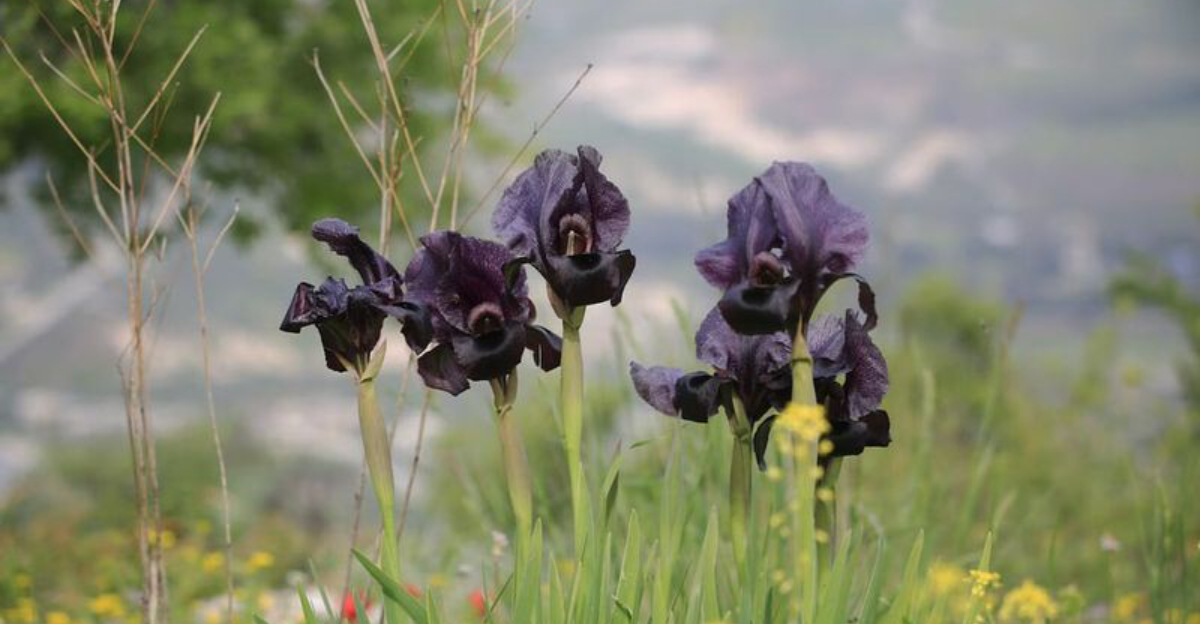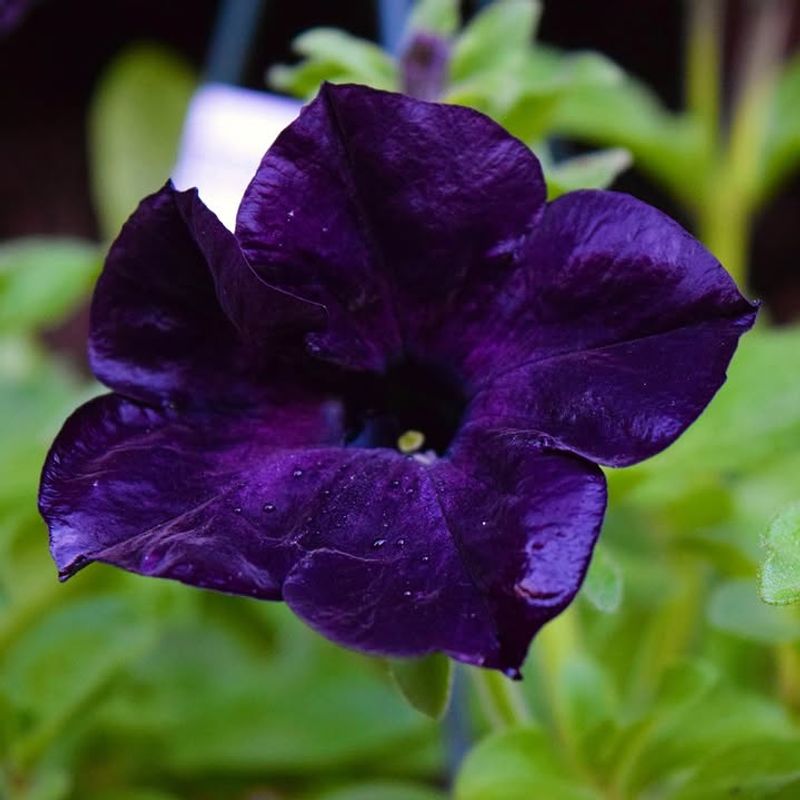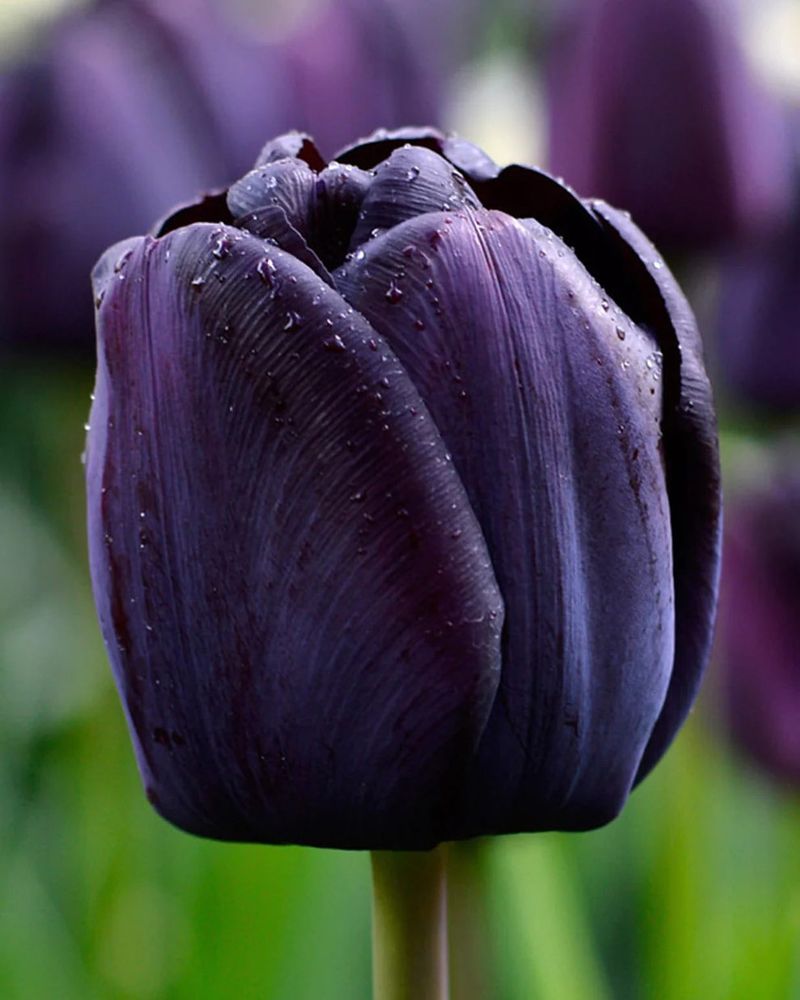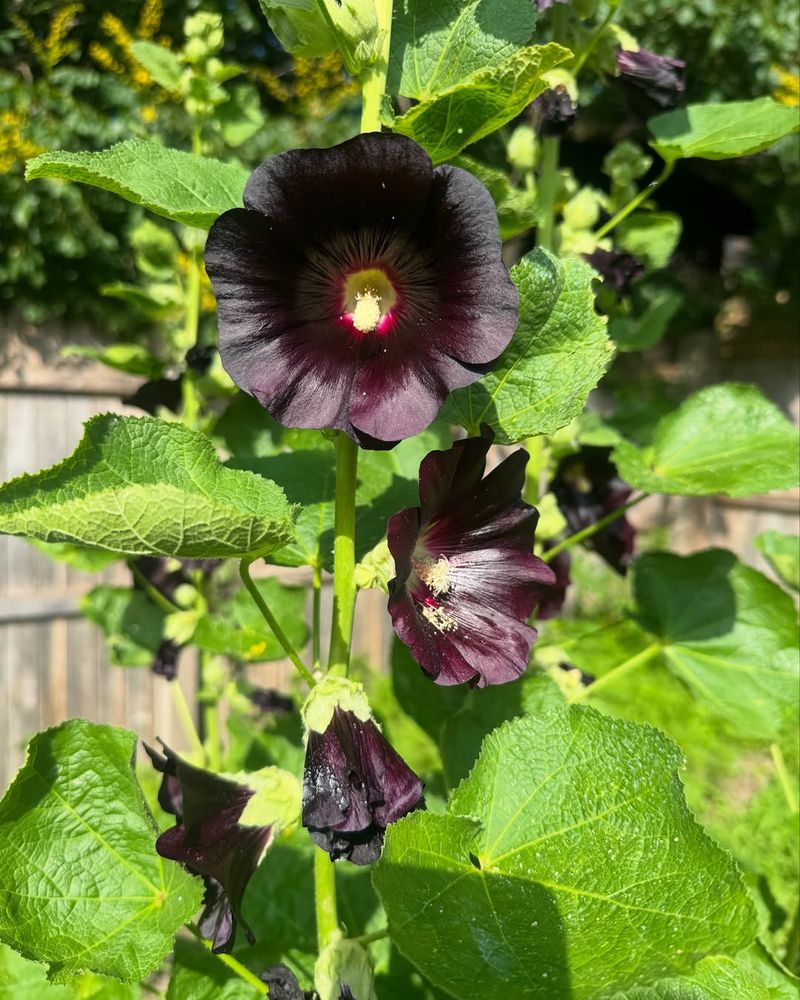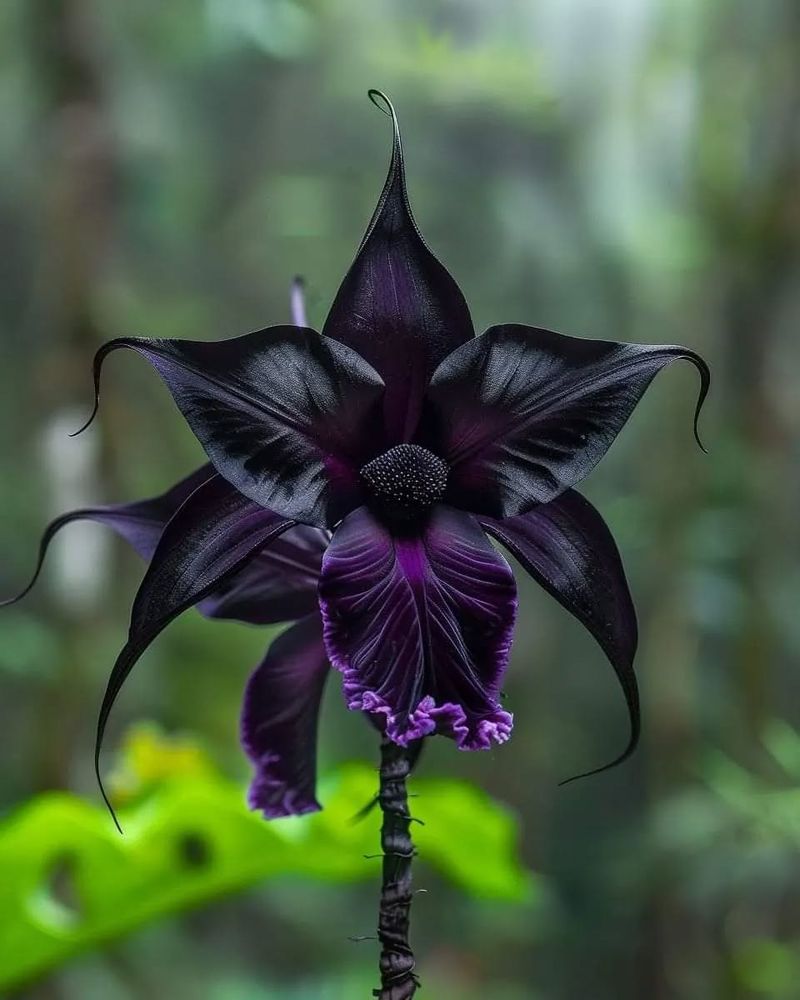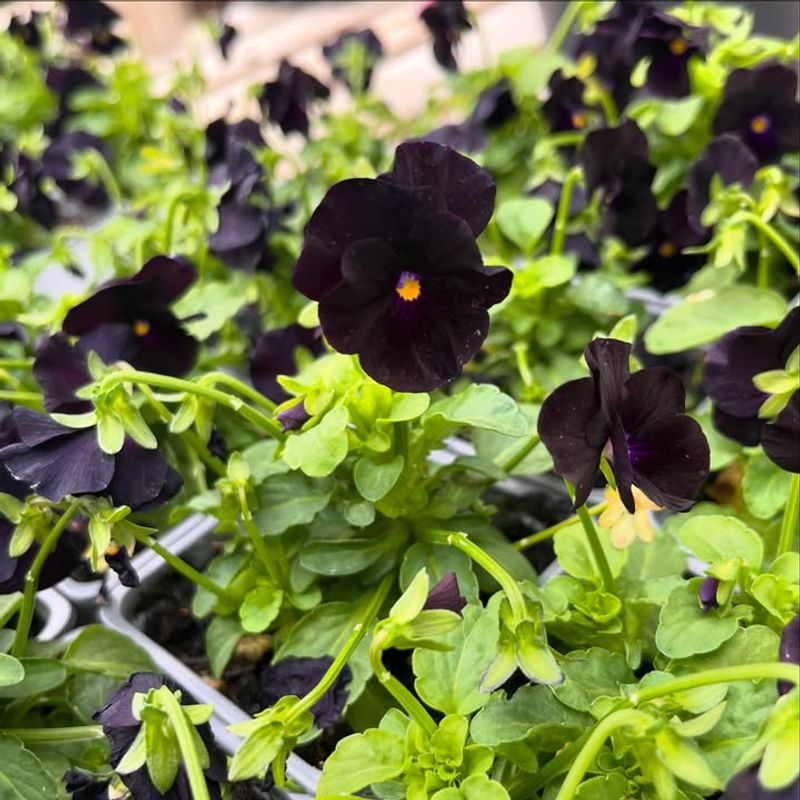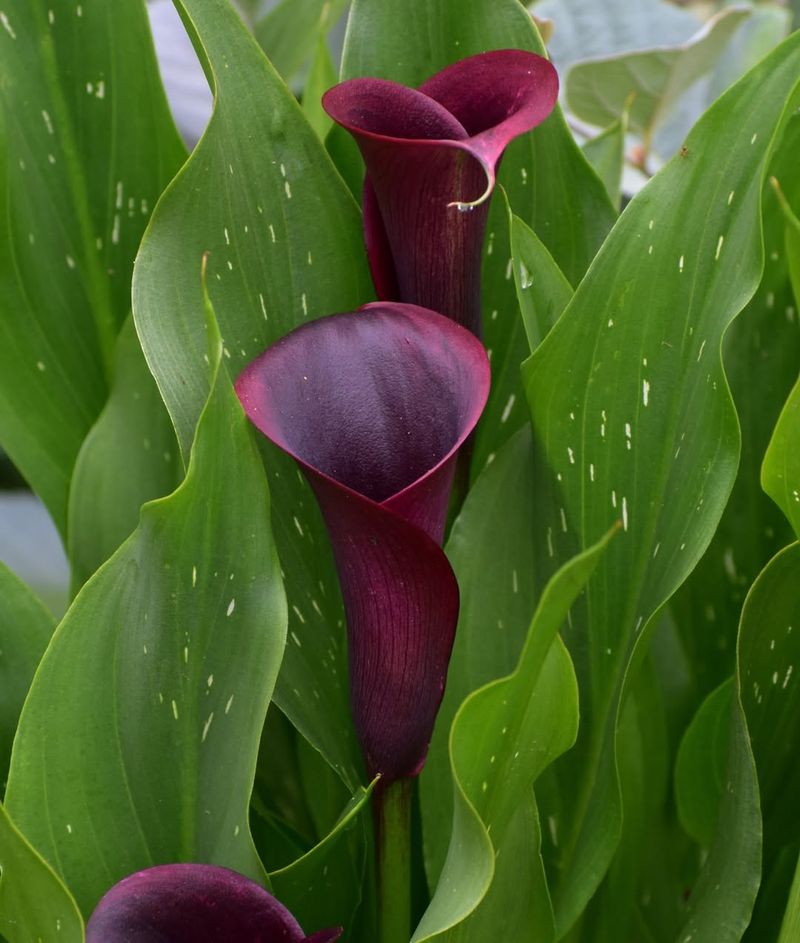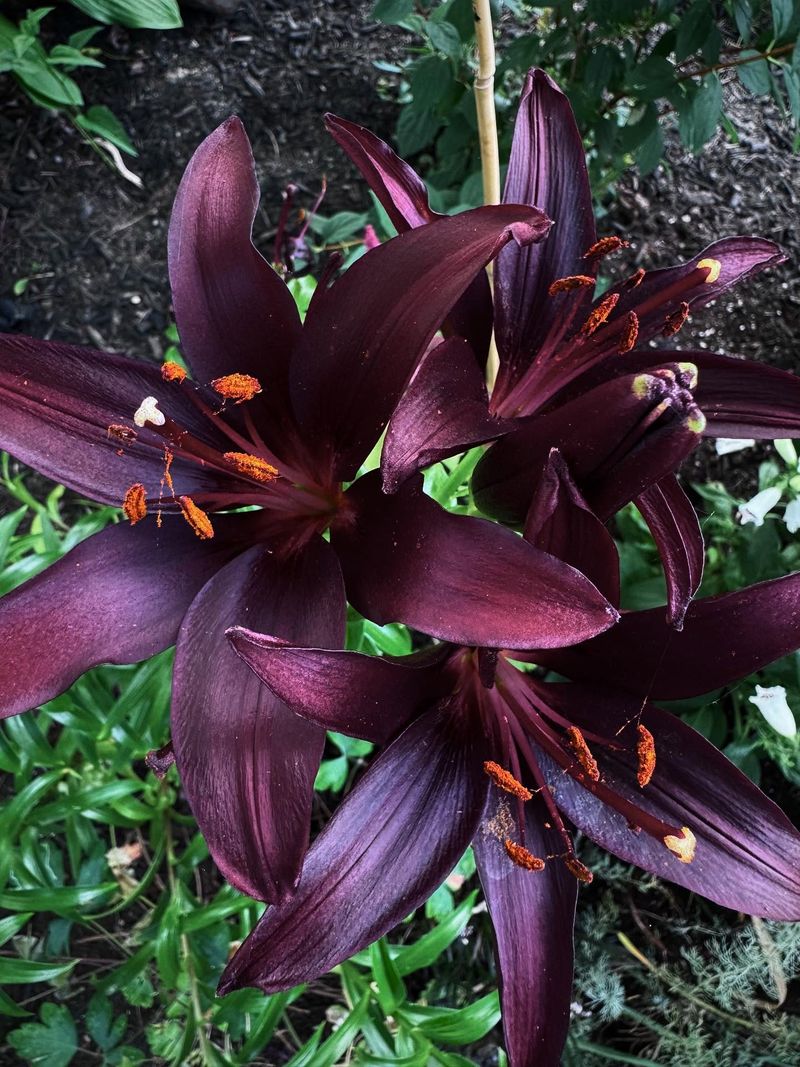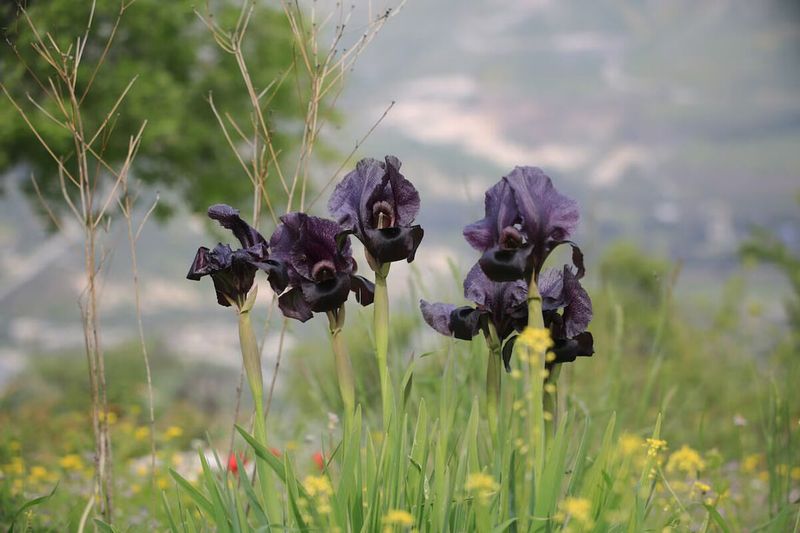I’ve never been one to shy away from a little garden drama, and nothing turns heads faster than black flowers. The first time I planted them, I felt like I’d struck garden gold in the darkest shade. These bold beauties add depth, mystery, and a touch of intrigue that makes every other bloom stand a little taller.
Whenever I want my garden to really steal the show, I reach for these black flowers that pack a punch and bring unforgettable flair.
1. Black Velvet Petunia
These petunias look like they’ve been dipped in midnight ink. The velvety texture makes them even more striking, especially when sunlight catches the edges of their petals. They’re surprisingly easy to grow, which is great news for beginners.
Plant them in containers or hanging baskets where you can admire them up close. They love full sun and need regular watering to keep blooming all summer long. Pinch off faded flowers to encourage even more blooms throughout the season.
2. Queen Of Night Tulip
Honestly, these tulips are showstoppers in any spring garden. Their deep maroon-black color looks almost unreal when they first open. Plant them in clusters for maximum impact rather than spacing them out individually.
They prefer well-drained soil and a sunny spot to really thrive. Plant the bulbs in fall, about six inches deep, and wait for the magic to happen come springtime. Pair them with white or yellow tulips for a stunning contrast that’ll make your neighbors curious.
3. Black Hollyhock
Talk about cottage garden charm with a gothic twist. Black hollyhocks can grow up to six feet tall, creating dramatic vertical interest in your garden beds. Their dark blooms open gradually from bottom to top throughout the summer.
Give them a sunny location with decent soil, and they’ll reward you year after year since they’re biennials that self-seed readily. Stake taller plants to prevent them from toppling over in strong winds or heavy rain.
4. Black Bat Flower
This one’s for gardeners who want something truly unusual. The black bat flower looks exactly like its name suggests, with wing-shaped petals and long whiskers that can reach up to a foot long. It’s definitely a conversation starter.
They need warm, humid conditions and filtered light to flourish, making them perfect for shaded tropical gardens or indoor growing. Keep the soil consistently moist but not waterlogged, and mist the leaves regularly to maintain humidity.
5. Black Pansy
Pansies with their cheerful faces get a moody makeover in this black variety. Their dark petals sometimes show hints of deep purple when light hits them just right. They’re cool-season bloomers that perform best in spring and fall.
Plant them in borders, containers, or window boxes for pops of dark elegance. They tolerate partial shade better than many flowering plants, making them versatile for different garden spots. Take care of it regularly to keep fresh blooms coming.
6. Chocolate Cosmos
Here’s something special: flowers that actually smell like chocolate. Chocolate cosmos have deep reddish-black blooms that release a subtle cocoa scent on warm days. They bloom from midsummer through fall, providing long-lasting color.
They prefer full sun and well-drained soil to prevent root rot during wet periods. In colder climates, treat them like dahlias by digging up the tubers before frost and storing them indoors over winter for replanting next spring.
7. Black Calla Lily
Sleek and sophisticated, black calla lilies bring architectural beauty to any garden. Their smooth, trumpet-shaped blooms have an almost waxy appearance that catches the eye immediately. They’re actually deep purple but appear black in most lighting conditions.
Plant them in rich, moist soil where they’ll get morning sun and afternoon shade. They make stunning cut flowers that last well in arrangements, so don’t hesitate to bring some indoors to enjoy their elegant form up close.
8. Black Mondo Grass
Okay, technically this is foliage rather than flowers, but the dark blades are too dramatic to skip. Black mondo grass produces tiny pinkish-white flowers in summer that contrast beautifully against the near-black leaves. It’s perfect for edging pathways or filling gaps between stepping stones.
This slow-growing perennial thrives in partial shade and well-drained soil. Use it as a groundcover or accent plant to add year-round dark color and texture to your garden design.
9. Black Rose
While truly black roses don’t exist in nature, some varieties come remarkably close with their deep burgundy-black petals. Varieties like Black Baccara or Black Magic create that coveted gothic look. They bloom repeatedly throughout the growing season with proper care.
Roses need at least six hours of sunlight daily and consistent watering at the base to prevent fungal issues. Prune in early spring and feed regularly with rose fertilizer for the best blooms all season long.
10. Black Pearl Pepper
Who says edible plants can’t be ornamental? Black pearl peppers have stunning dark foliage and produce small, round black fruits that eventually turn red. The entire plant looks dramatic from foliage to fruit, making it perfect for both vegetable and flower gardens.
They love hot weather and full sun, thriving in containers or garden beds equally well. The peppers are edible but quite spicy, so handle them carefully when harvesting for cooking or simply enjoy them as decorative elements.
11. Black Lily
Asiatic lilies in near-black shades bring bold elegance to midsummer gardens. Their large, star-shaped blooms face upward, showing off their rich dark color perfectly. They grow from bulbs and return reliably year after year once established.
Plant bulbs in fall or early spring in well-drained soil with plenty of organic matter mixed in. They appreciate full sun but benefit from mulch to keep roots cool during hot summer months. Space them about eight inches apart for best results.
12. Black Iris
Bearded irises in dark shades create stunning focal points in spring gardens. Their intricate blooms with fuzzy beards and ruffled petals add texture and depth to planting beds. Some varieties even have a subtle sweet fragrance that attracts beneficial pollinators.
Plant rhizomes in late summer with the tops partially exposed to sunlight, as they need this to bloom properly. They’re drought-tolerant once established and divide easily every few years to create more plants for expanding your dark flower collection.

